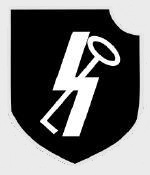The Motor Pool TMP7035 German Late Version Sd. Kfz. 171 PzKpfw V Panther Ausf. G Medium Tank - 12.SS Panzer Division, Normandy, 1944 (1:35 Scale)
"If the tank succeeds, then victory follows."
- Major-General Heinz Guderian, "Achtung Panzer!"
 In many respects, the Panther tank was viewed as the finest armored fighting vehicle of the Second World War. Based in large part upon the Soviet's highly successful T-34 medium tank, the PzKpfw V Ausfuhrung G was built by several manufacturers including MAN, Daimler-Benz and MNH. Mounting a fearsome 7.5cm KwK42 L/70 cannon and two 7.92mm MG34 machineguns, the Panther Ausf. G represented the third and certainly the most impressive installment in the Panther series.
In many respects, the Panther tank was viewed as the finest armored fighting vehicle of the Second World War. Based in large part upon the Soviet's highly successful T-34 medium tank, the PzKpfw V Ausfuhrung G was built by several manufacturers including MAN, Daimler-Benz and MNH. Mounting a fearsome 7.5cm KwK42 L/70 cannon and two 7.92mm MG34 machineguns, the Panther Ausf. G represented the third and certainly the most impressive installment in the Panther series.
This particular version has been painted in a Norman camouflage scheme and was attached to 12.SS Panzer Division during the "Battle of the Falaise Gap".
Sold Out!
Dimensions:
Length: 10 inches
Width: 4 inches
Height: 2.75 inches
Historical Account: "Dying Embers" - On June 14th, 1944, a British naval barrage hit the divisional command post of the 12.SS Panzer Division at Venoix, killing Fritz Witt, its commander, and leaving the division without a leader. The thirty-three-year-old Kurt "Panzermeyer" Meyer was ordered to take command of the division, becoming the youngest divisional commander of either side during the war.
Over the next four weeks, the division managed to halt all Allied attempts to take Caen, despite the Allies' superior numbers and overwhelming air supremacy. The ferocity of the combat during this period equalled or exceeded anything the German troops had encountered on the Eastern front. (In this case also, Meyer was convicted of war crimes - he had ordered his men not to take prisoners.) No such order was given on the Allied side of the lines but it was scarcely needed. Time and again to the consternation and often sadness of the attacking Allied troops, the brave youth of the 12.SS fought to the bitter end. Despite their successes in breaking up several major attacks, the division suffered immense losses, and in the first week of July 1944, Meyer ignored orders to hold the line north of Caen and withdrew the shattered remnants of his division south of the city. In the fighting from the day after D-Day until July 9th the division had lost 4,000 dead with a further 8,000 wounded and missing.
The division was to have little respite though, and on July 19th took part in the defence against the Anglo-Canadian Operation Goodwood. Following this, the division was pulled out of the line and used to form the mobile reserve for I.SS-Panzerkorps. Rather than rest and refitting, the division found itself involved in constant fire-brigade actions. In early August, the division took part in defensive actions to halt two Allied operations, Totalize and Tractible. At the launch of Totalize, the sixty remaining panzers of the HJ were faced with over 600 tanks of the Canadian First Army. Despite these odds, the division managed to halt the offensive short of its objectives.







